Abstract
The insulin-regulated glucose transporter GLUT4 was immunolocalized in rat cardiac muscle under conditions of basal and stimulated glucose uptake, achieved by fasting and a combined exercise/insulin stimulus, respectively. In basal myocytes there was very little (less than 1%) GLUT4 in the different domains of the plasma membrane (sarcolemma, intercalated disk, and transverse tubular system). GLUT4 was localized in small tubulo-vesicular elements that occur predominantly near the sarcolemma and the transverse tubular system and in the trans-Golgi region. Upon stimulation approximately 42% of GLUT4 was found in the plasma membrane. Each domain of the plasma membrane contributed equally to this effect. GLUT4-positive, clathrin-coated pits were also present at each cell surface domain. The remainder of the labeling was in tubulo-vesicular elements at the same sites as in basal cells and in the intercalated disk areas. The localization of GLUT4 in cardiac myocytes is essentially the same as in brown adipocytes, skeletal muscle, and white adipocytes. We conclude that increased glucose transport in muscle and fat is accounted for by translocation of GLUT4 from the intracellular tubulo-vesicular elements to the plasma membrane. The labeling of coated pits indicates that in stimulated myocytes, as in adipocytes, GLUT4 recycles constantly between the endosomal compartment and the plasma membrane and that stimulation of the exocytotic rate constant is likely the major mechanism for GLUT4 translocation.
Full text
PDF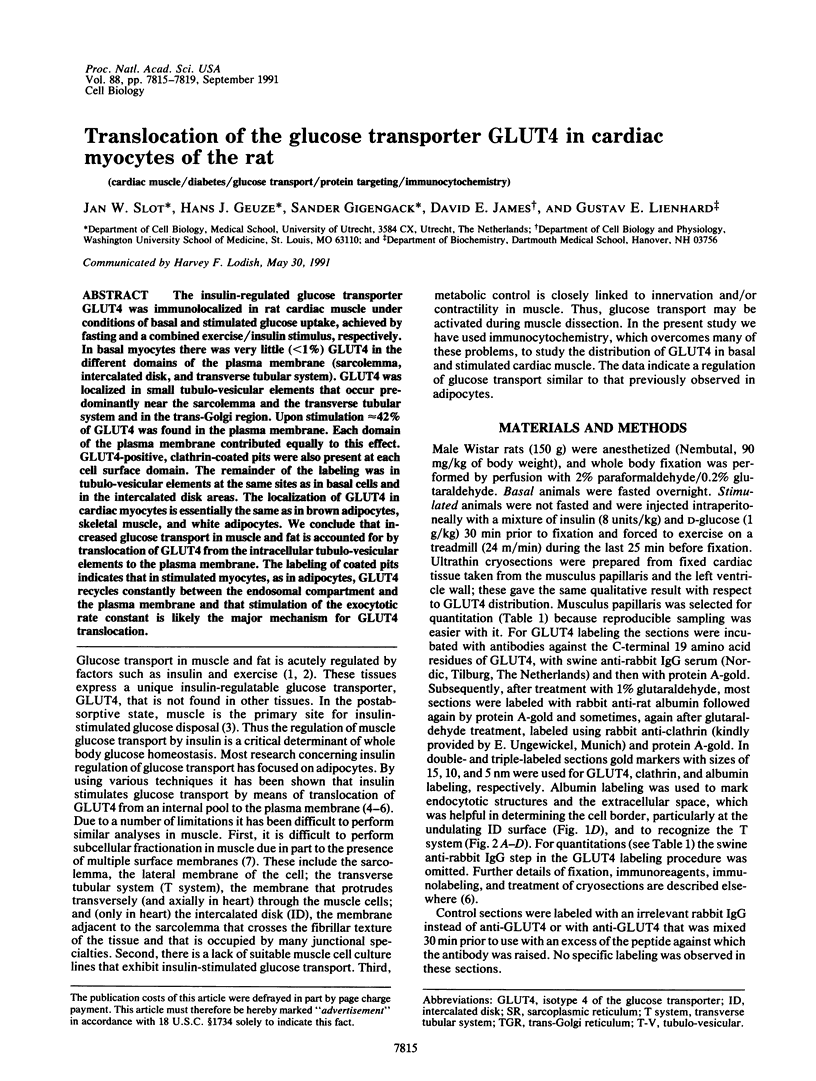
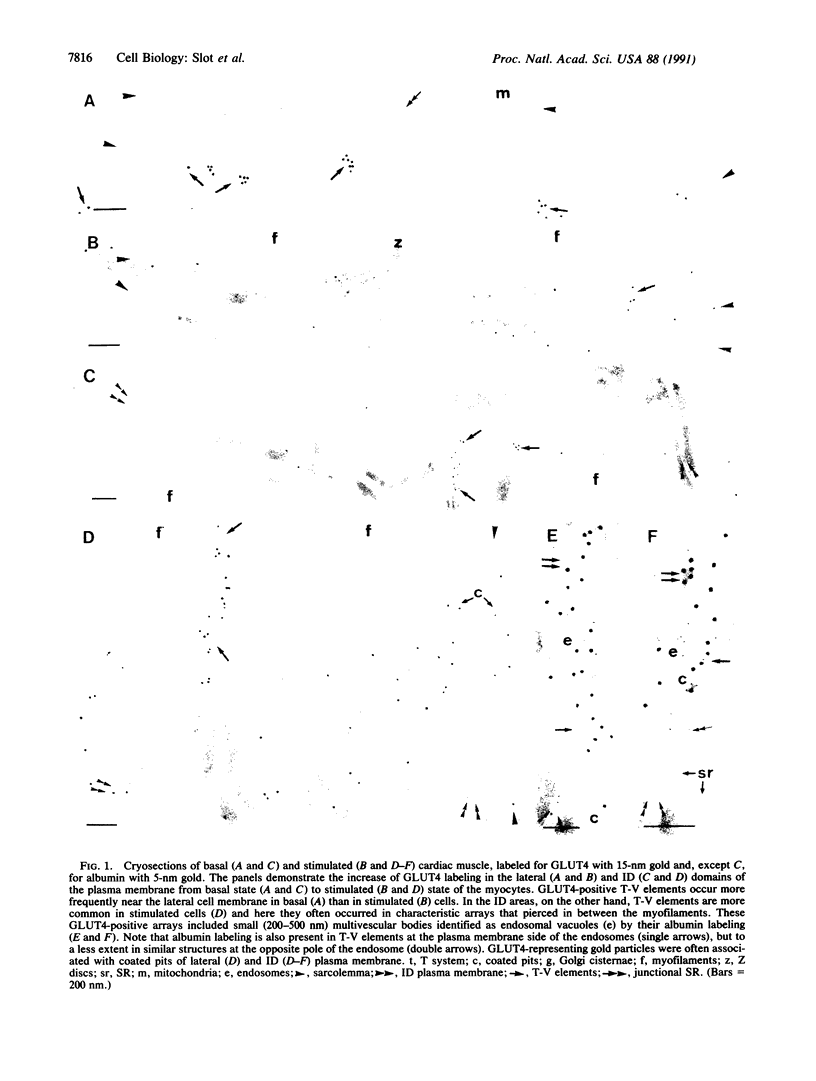
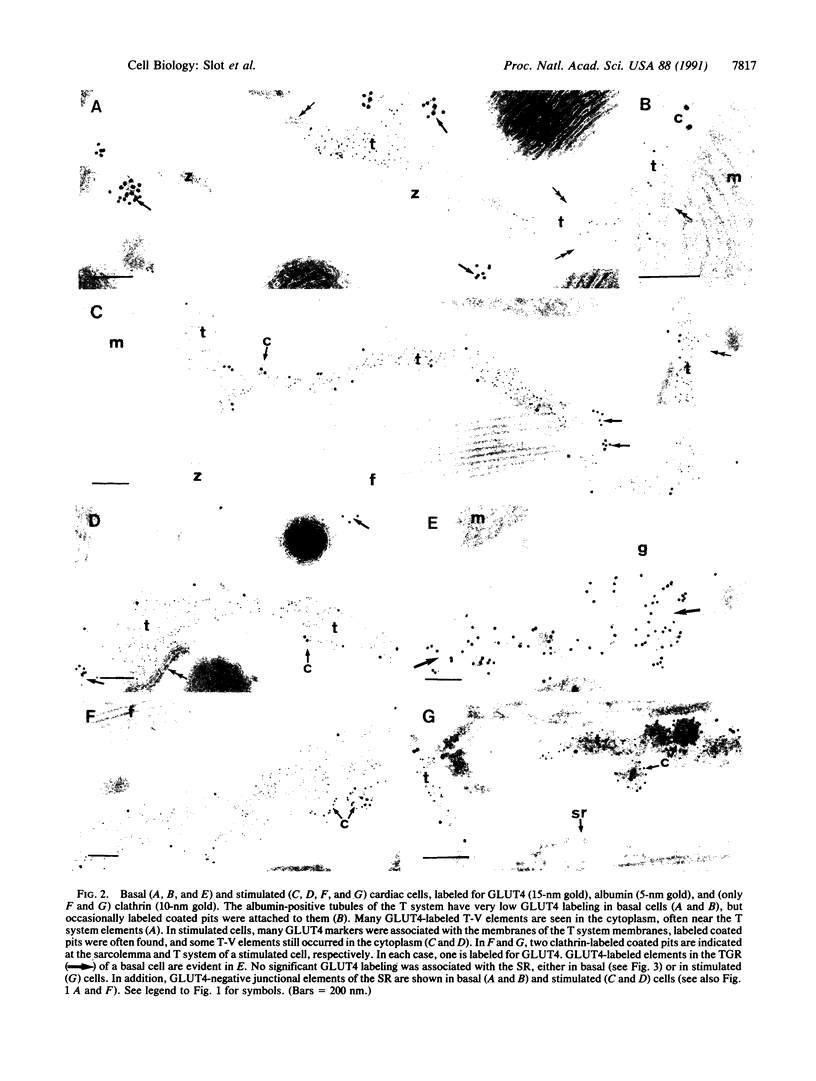
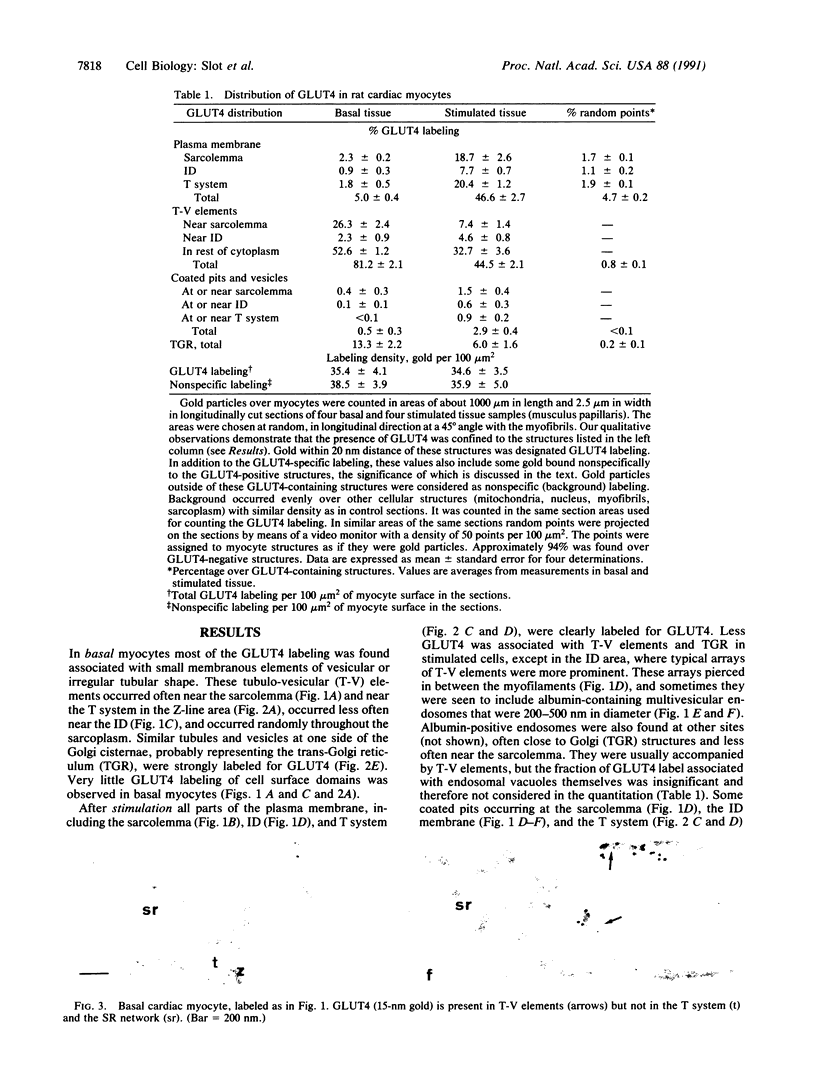
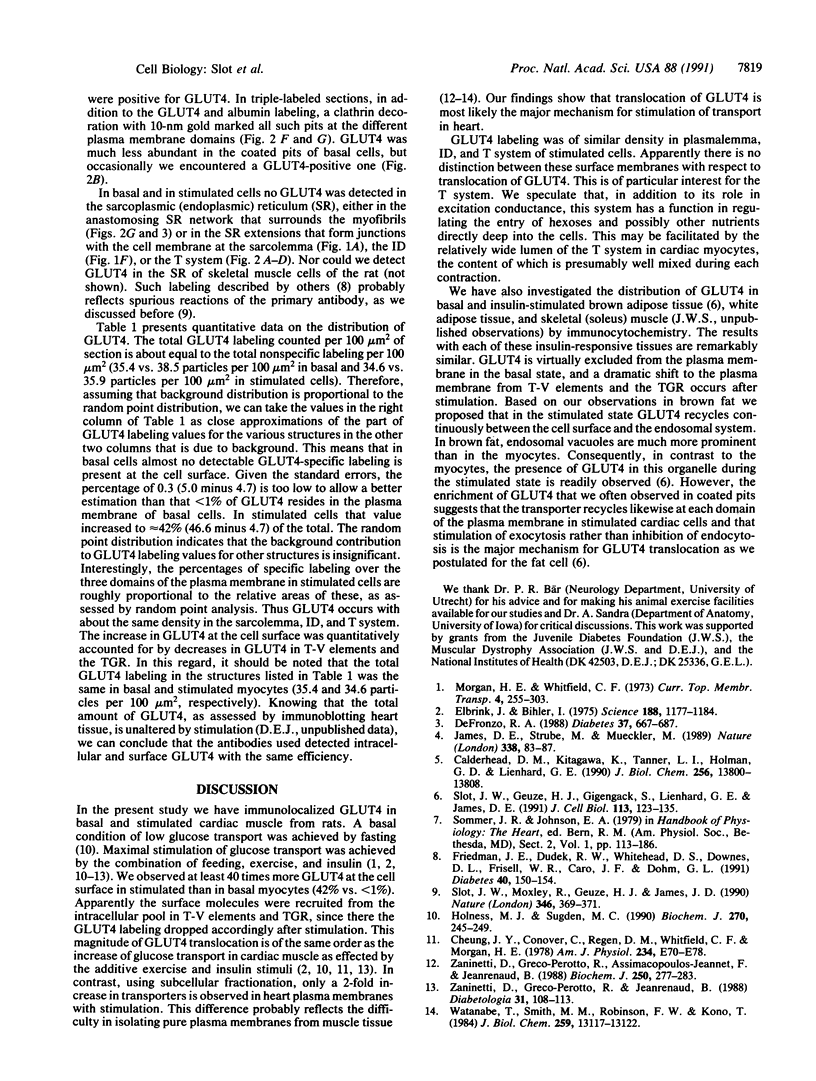
Images in this article
Selected References
These references are in PubMed. This may not be the complete list of references from this article.
- Calderhead D. M., Kitagawa K., Tanner L. I., Holman G. D., Lienhard G. E. Insulin regulation of the two glucose transporters in 3T3-L1 adipocytes. J Biol Chem. 1990 Aug 15;265(23):13801–13808. [PubMed] [Google Scholar]
- Cheung J. Y., Conover C., Regen D. M., Whitfield C. F., Morgan H. E. Effect of insulin on kinetics of sugar transport in heart muscle. Am J Physiol. 1978 Jan;234(1):E70–E78. doi: 10.1152/ajpendo.1978.234.1.E70. [DOI] [PubMed] [Google Scholar]
- DeFronzo R. A. Lilly lecture 1987. The triumvirate: beta-cell, muscle, liver. A collusion responsible for NIDDM. Diabetes. 1988 Jun;37(6):667–687. doi: 10.2337/diab.37.6.667. [DOI] [PubMed] [Google Scholar]
- Elbrink J., Bihler I. Membrane transport: its relation to cellular metabolic rates. Science. 1975 Jun 20;188(4194):1177–1184. doi: 10.1126/science.1096301. [DOI] [PubMed] [Google Scholar]
- Friedman J. E., Dudek R. W., Whitehead D. S., Downes D. L., Frisell W. R., Caro J. F., Dohm G. L. Immunolocalization of glucose transporter GLUT4 within human skeletal muscle. Diabetes. 1991 Jan;40(1):150–154. doi: 10.2337/diab.40.1.150. [DOI] [PubMed] [Google Scholar]
- Holness M. J., Sugden M. C. Glucose utilization in heart, diaphragm and skeletal muscle during the fed-to-starved transition. Biochem J. 1990 Aug 15;270(1):245–249. doi: 10.1042/bj2700245. [DOI] [PMC free article] [PubMed] [Google Scholar]
- James D. E., Strube M., Mueckler M. Molecular cloning and characterization of an insulin-regulatable glucose transporter. Nature. 1989 Mar 2;338(6210):83–87. doi: 10.1038/338083a0. [DOI] [PubMed] [Google Scholar]
- Slot J. W., Geuze H. J., Gigengack S., Lienhard G. E., James D. E. Immuno-localization of the insulin regulatable glucose transporter in brown adipose tissue of the rat. J Cell Biol. 1991 Apr;113(1):123–135. doi: 10.1083/jcb.113.1.123. [DOI] [PMC free article] [PubMed] [Google Scholar]
- Slot J. W., Moxley R., Geuze H. J., James D. E. No evidence for expression of the insulin-regulatable glucose transporter in endothelial cells. Nature. 1990 Jul 26;346(6282):369–371. doi: 10.1038/346369a0. [DOI] [PubMed] [Google Scholar]
- Watanabe T., Smith M. M., Robinson F. W., Kono T. Insulin action on glucose transport in cardiac muscle. J Biol Chem. 1984 Nov 10;259(21):13117–13122. [PubMed] [Google Scholar]
- Zaninetti D., Greco-Perotto R., Assimacopoulos-Jeannet F., Jeanrenaud B. Effects of insulin on glucose transport and glucose transporters in rat heart. Biochem J. 1988 Feb 15;250(1):277–283. doi: 10.1042/bj2500277. [DOI] [PMC free article] [PubMed] [Google Scholar]
- Zaninetti D., Greco-Perotto R., Jeanrenaud B. Heart glucose transport and transporters in rat heart: regulation by insulin, workload and glucose. Diabetologia. 1988 Feb;31(2):108–113. doi: 10.1007/BF00395557. [DOI] [PubMed] [Google Scholar]





